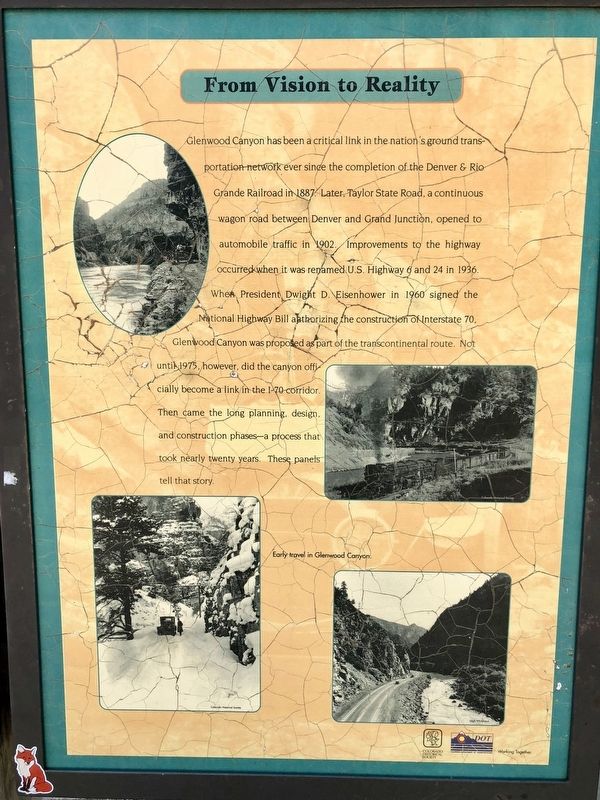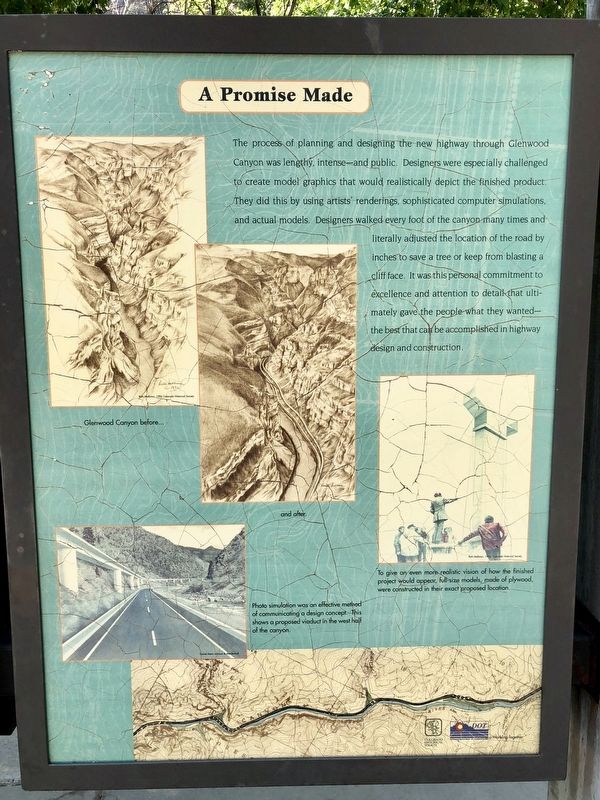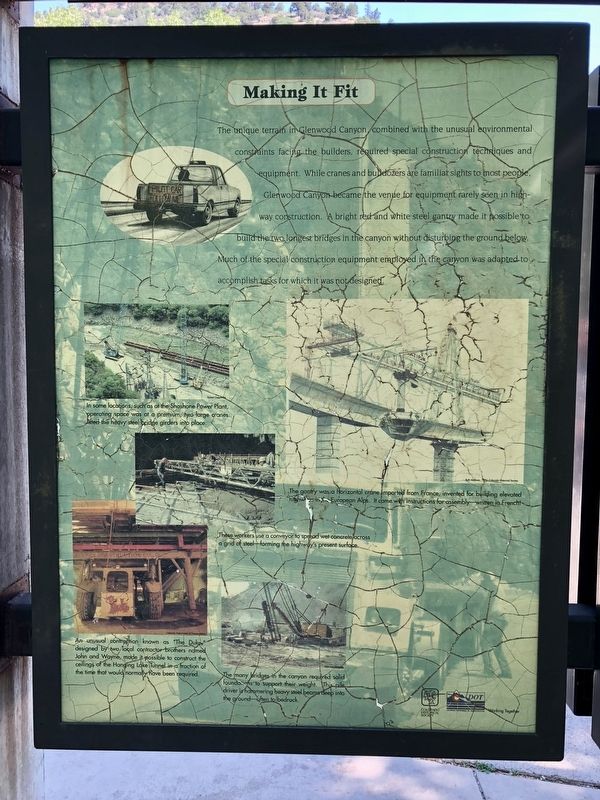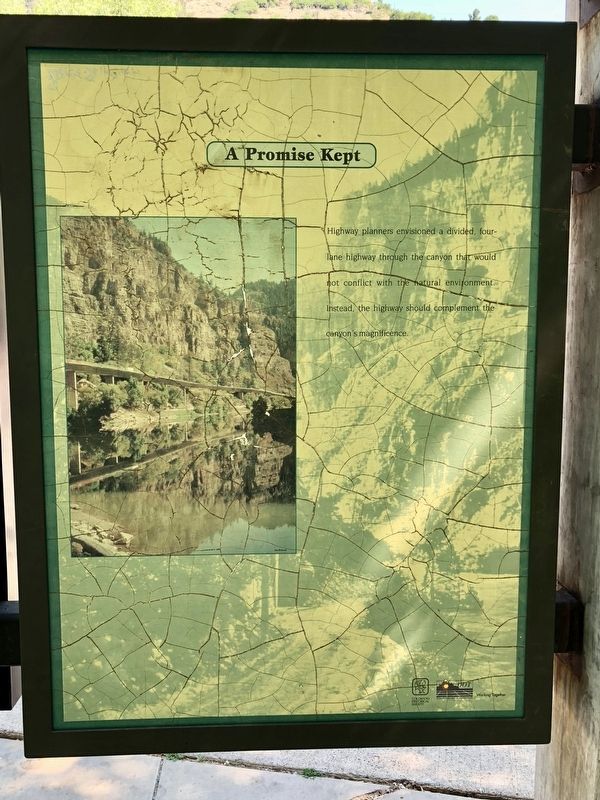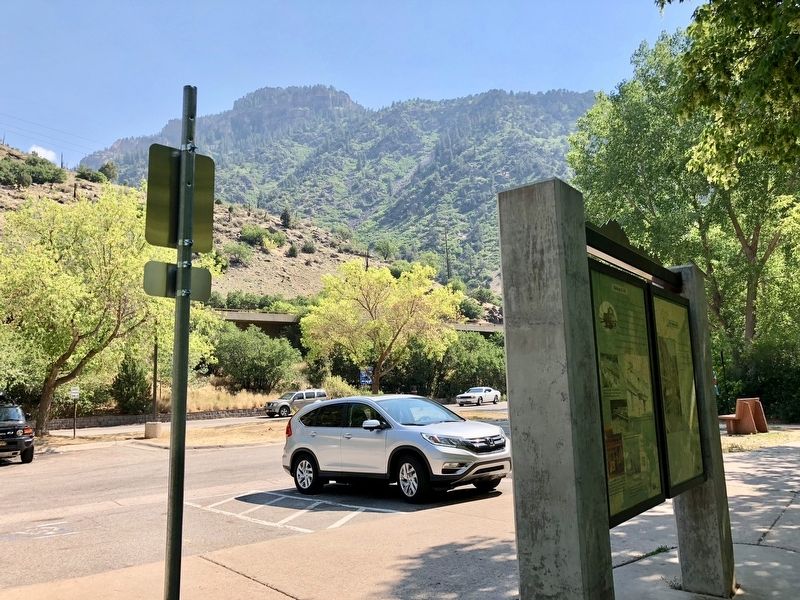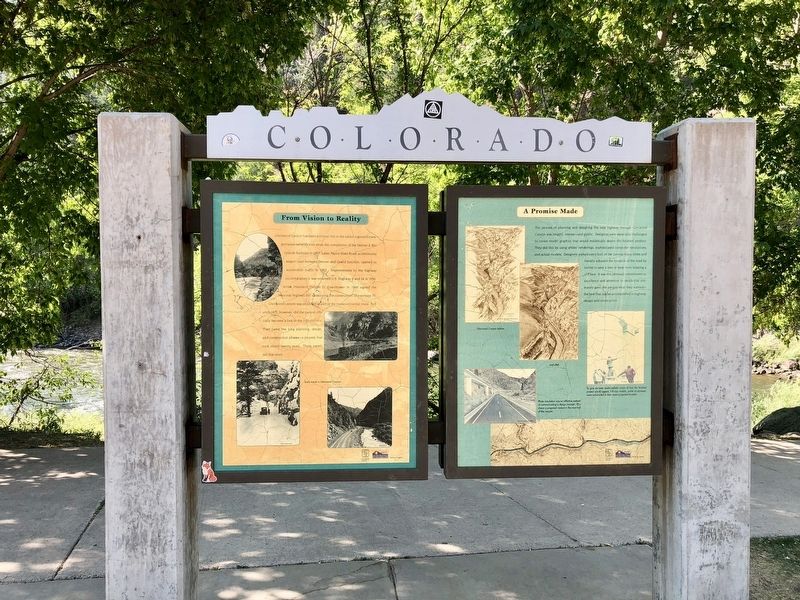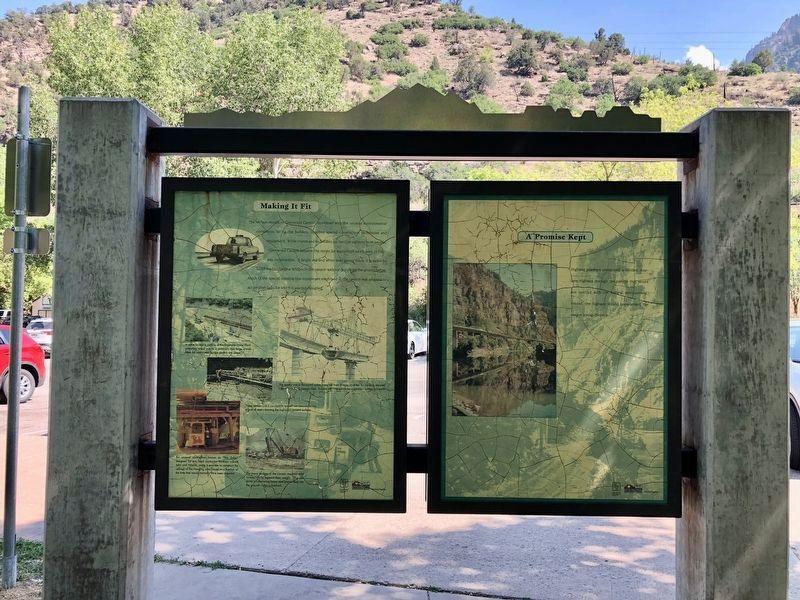Near Glenwood Springs in Garfield County, Colorado — The American Mountains (Southwest)
Building Interstate 70 Through Glenwood Canyon
Glenwood Canyon has been a critical link in the nation's ground transportation network ever since the completion of the Denver & Rio Grande Railroad in 1887. Later, Taylor State Road, a continuous wagon road between Denver and Grand Junction, opened to automobile traffic in 1902. Improvements to the highway occurred when it was renamed U.S. Highway 6 and 24 in 1936. When President Dwight D. Eisenhower in 1960 signed the National Highway Bill authorizing the construction of Interstate 70, Glenwood Canyon was proposed as part of the transcontinental route. Not until 1975, however, did the canyon officially become a link in the I-70 corridor. Then came the long planning, design, and construction phases—a process that took nearly twenty years. These panels tell that story.
The process of planning and designing the new highway through Glenwood Canyon was lengthy, intense—and public. Designers were especially challenged to create model graphics that would realistically depict the finished product. They did this by using artists' renderings, sophisticated computer simulations and actual models. Designers walked every foot of the canyon many times and literally adjusted the location of the road by inches to save a tree or keep from blasting a cliff face. It was this personal commitment to excellence and attention to detail that ultimately gave the people what they wanted—the best that can be accomplished in highway design and construction.
The unique terrain in Glenwood Canyon, combined with the unusual environmental constraints facing the builders, required special construction techniques and equipment. While cranes and bulldozers are familiar sights to most people, Glenwood Canyon became the venue for equipment rarely seen in highway construction. A bright red and white steel gantry made it possible to build the two longest bridges in the canyon without disturbing the ground below. Much of the special construction equipment employed in the canyon was adapted to accomplish tasks for which it was not designed.
Highway planners envisioned a divided, four-lane highway through the canyon that would not conflict with the natural environment. Instead, the highway should complement the canyon's magnificence.
Erected by the Colorado Historical Society, Colorado Department of Transportation.
Topics and series. This historical marker is listed in these topic lists: Natural Features • Roads & Vehicles. In addition, it is included in the Former U.S. Presidents: #34 Dwight D. Eisenhower series list. A significant historical year for this entry is 1887.
Location. 39° 33.636′ N, 107° 15.141′ W. Marker is near Glenwood Springs, Colorado, in Garfield County. Marker can be reached from Interstate 70 Frontage Road at milepost 121. Located at the I-70 C-DOT Grizzly Creek Rest Stop. Touch for map. Marker is in this post office area: Glenwood Springs CO 81601, United States of America. Touch for directions.
Other nearby markers. At least 8 other markers are within 4 miles of this marker, measured as the crow flies. The California Zephyr (approx. 2.1 miles away); A Grand Boulevard (approx. 2.1 miles away); Illuminating the Future (approx. 3.7 miles away); The Glenwood Springs Hydroelectric Plant (approx. 3.7 miles away); Rex Hotel (approx. 3.9 miles away); Star Hotel (approx. 3.9 miles away); Hotel Denver (approx. 3.9 miles away); Potter's Field (approx. 3.9 miles away). Touch for a list and map of all markers in Glenwood Springs.
Also see . . .
1. Glenwood Canyon I-70 Final Link. (Submitted on July 17, 2018, by Mark Hilton of Montgomery, Alabama.)
2. Post Independent article. I-70 through Glenwood Canyon: An engineering marvel, a transit challenge. (Submitted on July 17, 2018, by Mark Hilton of Montgomery, Alabama.)
Credits. This page was last revised on July 17, 2018. It was originally submitted on July 17, 2018, by Mark Hilton of Montgomery, Alabama. This page has been viewed 488 times since then and 42 times this year. Photos: 1, 2, 3, 4, 5, 6, 7. submitted on July 17, 2018, by Mark Hilton of Montgomery, Alabama.
